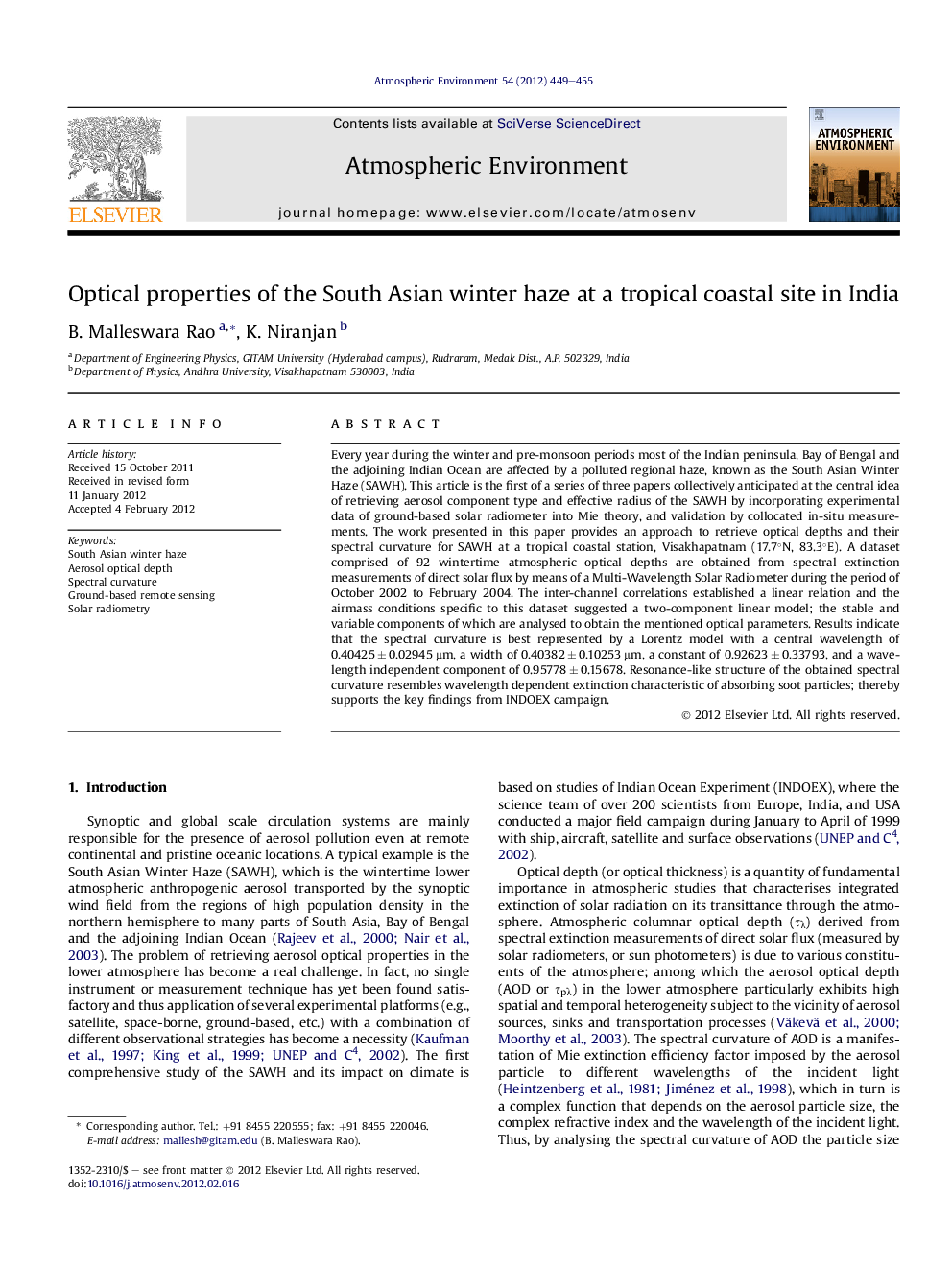| Article ID | Journal | Published Year | Pages | File Type |
|---|---|---|---|---|
| 4438816 | Atmospheric Environment | 2012 | 7 Pages |
Every year during the winter and pre-monsoon periods most of the Indian peninsula, Bay of Bengal and the adjoining Indian Ocean are affected by a polluted regional haze, known as the South Asian Winter Haze (SAWH). This article is the first of a series of three papers collectively anticipated at the central idea of retrieving aerosol component type and effective radius of the SAWH by incorporating experimental data of ground-based solar radiometer into Mie theory, and validation by collocated in-situ measurements. The work presented in this paper provides an approach to retrieve optical depths and their spectral curvature for SAWH at a tropical coastal station, Visakhapatnam (17.7°N, 83.3°E). A dataset comprised of 92 wintertime atmospheric optical depths are obtained from spectral extinction measurements of direct solar flux by means of a Multi-Wavelength Solar Radiometer during the period of October 2002 to February 2004. The inter-channel correlations established a linear relation and the airmass conditions specific to this dataset suggested a two-component linear model; the stable and variable components of which are analysed to obtain the mentioned optical parameters. Results indicate that the spectral curvature is best represented by a Lorentz model with a central wavelength of 0.40425 ± 0.02945 μm, a width of 0.40382 ± 0.10253 μm, a constant of 0.92623 ± 0.33793, and a wavelength independent component of 0.95778 ± 0.15678. Resonance-like structure of the obtained spectral curvature resembles wavelength dependent extinction characteristic of absorbing soot particles; thereby supports the key findings from INDOEX campaign.
Graphical abstractFigure optionsDownload full-size imageDownload high-quality image (305 K)Download as PowerPoint slideHighlights► The first of a three article series anticipated at ground-based remote sensing of regional haze. ► Formulates an alternate retrieval of AOD and spectral curvature of the South Asian Winter Haze. ► Resulted spectral curvature is best represented by a Lorentz model. ► Brings out an alternative to Angstrom turbidity parameters. ► Results support the key findings from INDOEX campaign.
